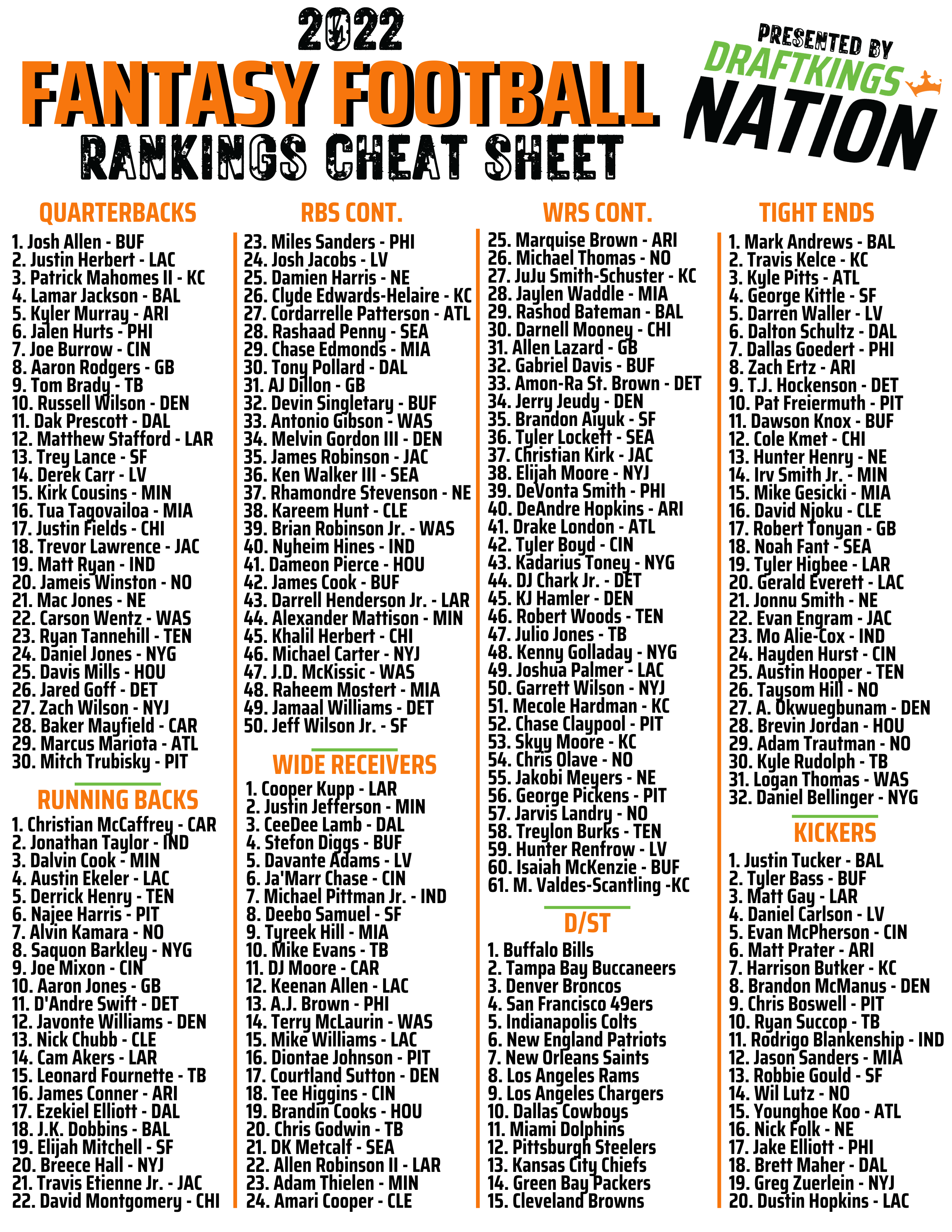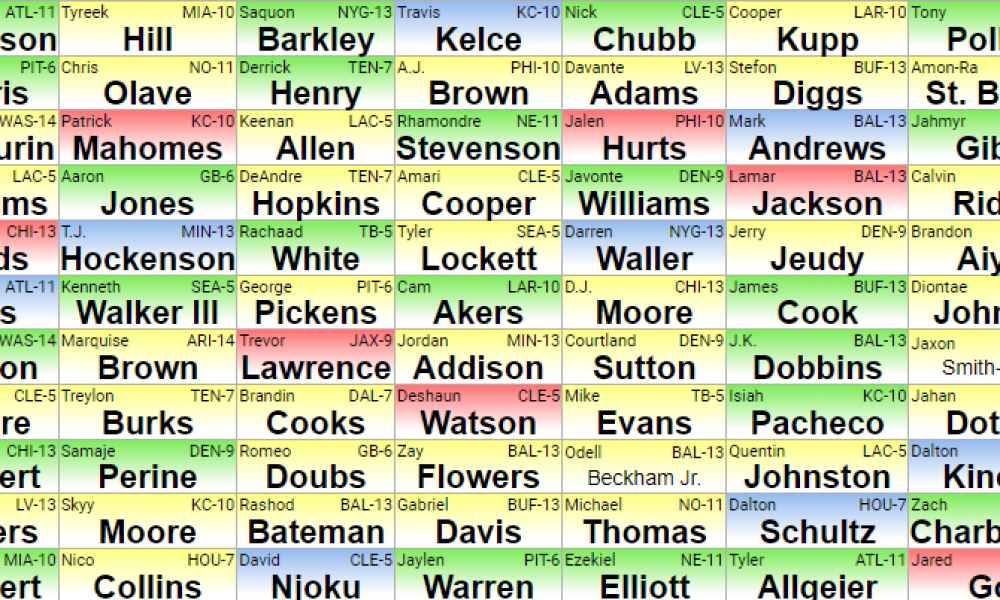Crafting Your Winning Blueprint: 12-Team PPR Fantasy Football Draft Strategy
The crisp air of autumn carries more than just the scent of falling leaves; it heralds the return of football, and more importantly, fantasy football. In the realm of 12-team PPR leagues, the draft is where championships are forged and dreams are realized. A well-executed draft strategy is your compass, guiding you through the unpredictable waters of player performance and maximizing your chances of glory.
A 12-team PPR (Points Per Reception) league presents a unique challenge. The added value of receptions alters the player landscape, demanding a nuanced approach to your draft preparation. Unlike standard scoring, where touchdowns reign supreme, PPR leagues reward consistency and volume, transforming pass-catching running backs and slot receivers into coveted assets. Successfully navigating this format necessitates a shift in perspective, prioritizing players who see a high volume of targets, even if their touchdown potential is less pronounced.
The history of fantasy football draft strategy is a tapestry woven with evolving trends and statistical insights. What once prioritized workhorse running backs has evolved into a dynamic system that recognizes the impact of passing offenses and the strategic deployment of various positions. The introduction of PPR scoring amplified this evolution, shining a light on the crucial role of receptions in accumulating fantasy points. In a 12-team league, this strategic layer becomes even more critical, as the competition for top talent is fiercer, and the margin for error is slimmer.
One of the main issues in 12-team PPR drafting is the scarcity of elite talent. With more teams vying for the same pool of players, the drop-off in projected points from the top tiers to the middle rounds can be significant. This emphasizes the importance of not only identifying value in the later rounds but also understanding the opportunity cost of reaching for a player too early. A robust draft strategy should account for this scarcity and incorporate contingency plans to address potential positional runs.
PPR scoring adds a point for each reception a player makes. For example, a receiver catching 10 passes for 100 yards scores 10 points for the yardage and an additional 10 points for the receptions, totaling 20 fantasy points. This dynamic shifts the value of certain positions. A running back who catches 4 passes per game becomes significantly more valuable than a similarly productive rusher who isn't involved in the passing game. Understanding this fundamental concept is the cornerstone of a successful 12-team PPR draft strategy.
One key benefit of having a sound draft strategy is maximizing your roster's point potential. By targeting players who excel in PPR formats, you're building a foundation for consistent scoring throughout the season. Another advantage is mitigating risk. A well-rounded draft reduces your reliance on any single player's performance and protects you from injuries or unexpected declines. Finally, a strategic approach allows you to exploit market inefficiencies, identifying undervalued players who can outperform their draft position.
A successful draft plan involves tiered rankings, identifying your target players within each tier, and remaining adaptable to the flow of the draft. Don't be afraid to deviate from your plan if a valuable player falls unexpectedly. Utilize mock drafts to practice different scenarios and refine your approach.
Advantages and Disadvantages of Zero RB Strategy (Example)
| Advantages | Disadvantages |
|---|---|
| Load up on high-value WRs and a top TE early. | Dependent on finding productive RBs later. |
| Capitalize on the positional scarcity of elite WRs. | Risk of RB injuries impacting your team significantly. |
Best Practices: 1. Prioritize running backs with receiving upside. 2. Target high-volume wide receivers, even if their touchdown potential is lower. 3. Don't neglect the tight end position; a top-tier tight end can provide a significant weekly advantage. 4. Be mindful of bye weeks; avoid drafting multiple players with the same bye week. 5. Stay informed about player news and adjust your rankings accordingly.
FAQ: 1. Should I draft a quarterback early? Generally, no. The quarterback position is deep, and waiting on a quarterback allows you to prioritize other positions. 2. What is a handcuff? A handcuff is the backup running back to a starter on your team, providing insurance in case of injury. 3. What is ADP? ADP stands for Average Draft Position and represents the average round a player is drafted in. 4. What are some good resources for fantasy football information? Websites like ESPN, Yahoo Fantasy, and FantasyPros offer valuable insights. 5. How important are mock drafts? Mock drafts are essential for practicing your strategy and getting a feel for draft flow. 6. What is a sleeper? A sleeper is a player projected to outperform their draft position. 7. What is a bust? A bust is a player who underperforms their draft position. 8. What is a Zero RB strategy? This strategy involves waiting to draft running backs until the later rounds, prioritizing wide receivers and a tight end early.
Tips and tricks: Don't be afraid to trade draft picks to move up and secure a target player. Pay attention to players' schedules; favorable early-season matchups can give your team a boost. Monitor training camp and preseason reports for emerging players who might outperform their projections.
Crafting a winning 12-team PPR fantasy football draft strategy is akin to tailoring a bespoke suit. It requires meticulous attention to detail, a deep understanding of the nuances of the format, and the flexibility to adapt to the ever-changing landscape of player values. By embracing the strategic elements outlined above, you'll not just be drafting a team; you'll be crafting a masterpiece, poised to conquer your league and claim the ultimate prize. The thrill of victory awaits, and with the right preparation, it's within your grasp. Embrace the challenge, refine your strategy, and prepare to experience the exhilaration of a championship season. Remember, the draft is not just the beginning; it's the foundation upon which fantasy legends are built.
The enduring allure of yo te necesito lyrics
Clip art unicorn and rainbow a spark of joy in a digital world
The underrated power of the parker ballpoint pen ink refill










:no_upscale()/cdn.vox-cdn.com/uploads/chorus_asset/file/23973231/2022_Fantasy_Football_Rankings_Cheatsheet__2_.png)


